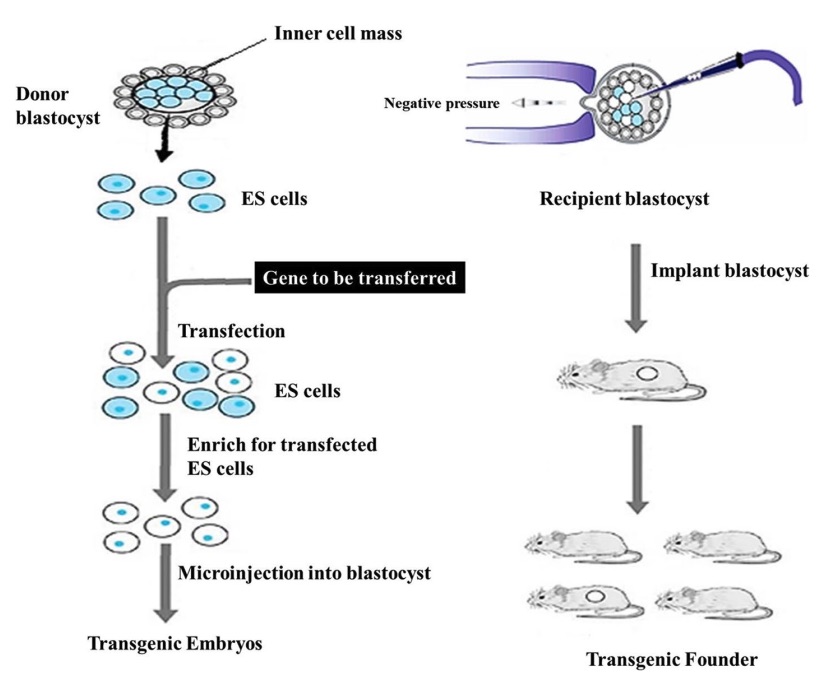DNA Microinjection
Microinjection is a useful technique that plays an important part in the generation of genetically modified mouse and rat models. Different microinjection systems can exist, the construction and configuration of which directly depends on the type of experiment. At Creative Biolabs, we are now offering DNA microinjection for transgenic model creation, ES cell injection and CRISPR injection services for customers with a need.
Introduction of DNA Microinjection
DNA microinjection is the dominating technique leading to random integration of a transgene via the introduction of DNA into the pronucleus of a developing zygote. Following fertilization of a mouse egg, the male and female pronuclei remain separated for a few hours before they fuse to make the zygotic nucleus, thus allowing for microinjection of the desired genes into the larger male pronucleus. Eggs that can survive the injections are transferred into the oviducts of a foster mother i.e., pseudopregnant female mice for the generation of Founder mouse, from which permanent transgenic lines can be established. The presence of transgenes in the offsprings can be identified by PCR analysis or Southern blot hybridization.
 Fig. 1 The DNA microinjection technique using ES cells.1
Fig. 1 The DNA microinjection technique using ES cells.1
Two kinds of DNA injections are included in our list:
Features of DNA Microinjection
- The amount of DNA delivered per cell is not limited and the delivery is precise, both of which increase the chance for integrative transformation.
- As a direct physical approach, this technique is host-range independent.
- Cells that are injected with the DNA material have high regeneration potential.
- Although pronuclear microinjection is popular, this method for transgenesis has some disadvantages such as low success rate and mosaic founders.
It's worth knowing that Creative Biolabs now offers ROSA26 Knock-in Models, to overcome the disadvantages of randomly transgenic models. This technique not only provides more consistent gene expression between animals but also requires less effort. Moreover, fewer animals are needed to perform experiments using this method.
ES Cell Injection & CRISPR Injection
Before producing the desired genetically modified mouse models, the embryonic stem (ES) cell must be transferred into blastocysts first to create chimeras. Similarly, CRISPR injections are needed for modification of the endogenous gene locus. At Creative Biolabs, we are capable of providing this type of injection only service for customers to create all kinds of targeted mutations.
See below for more information about related technologies for model creation:
- CRISPR/Cas9 Genome Editing Mouse Models
- TALEN-Mediated Genome Editing Mouse Models
- ESC/HR-Based Gene Targeting Mouse Models
- Transposon-Mediated Genome Manipulation
- Lentivirus-Mediated Transfection Models
With our rich experiences and cutting-edge techniques, Creative Biolabs is confident to provide you with the first-class services to meet your exact research needs. Contact us or send us an inquiry for more detailed information or a formal quote.
Reference
- Shakweer, W. M. E., et al. "A review of transgenic animal techniques and their applications." Journal of Genetic Engineering and Biotechnology 21.1 (2023): 55. doi:10.1186/s43141-023-00502-z. Distributed under Open Access license CC BY 4.0, without modification.
For Research Use Only.
